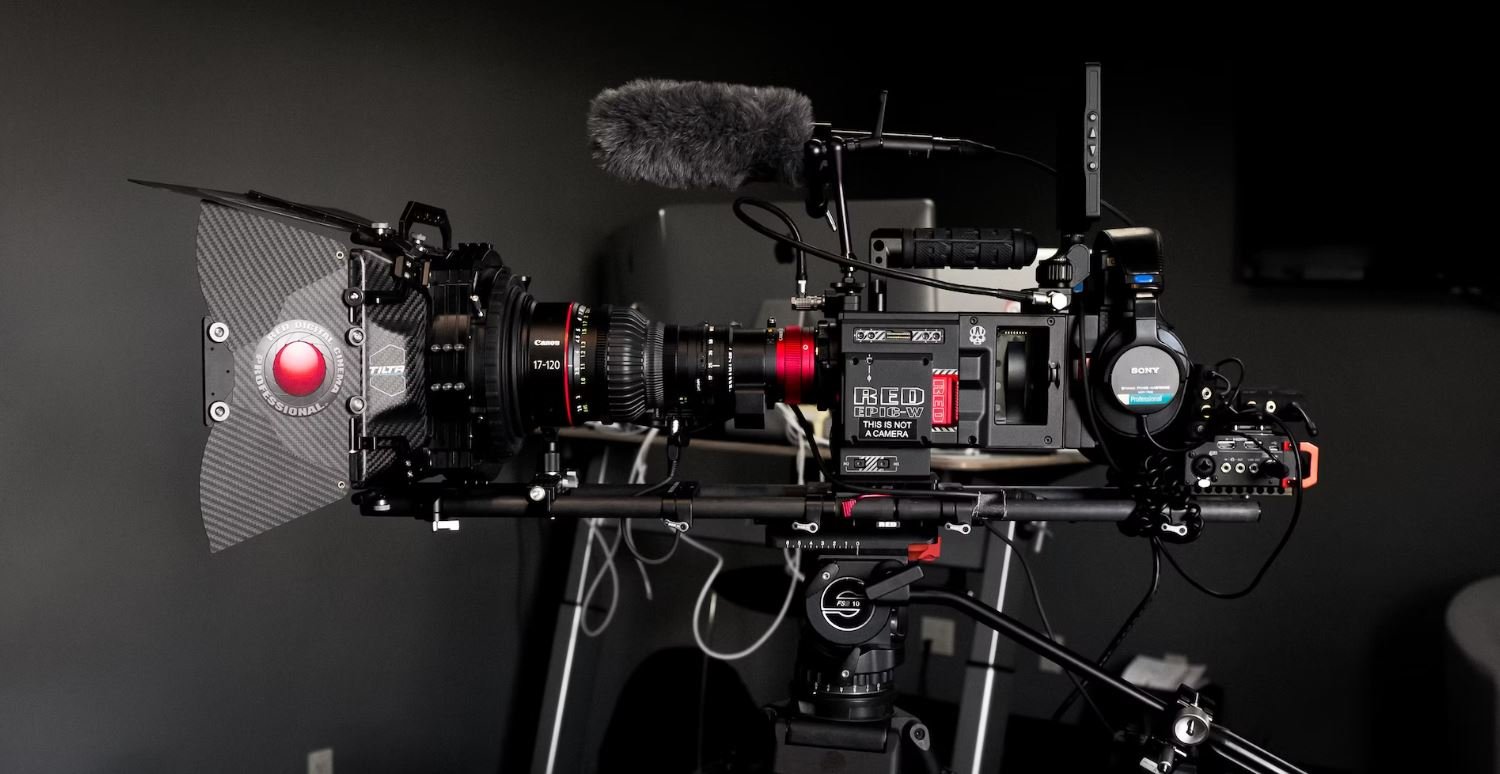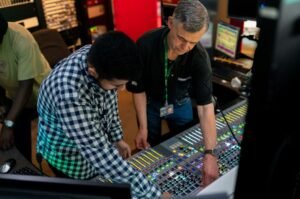AI for Media Buying
Artificial Intelligence (AI) is revolutionizing the world of media buying, enabling marketers to streamline their efforts, optimize ad campaigns, and improve return on investment (ROI). By leveraging advanced algorithms and machine learning, AI has the potential to take media buying to new heights.
Key Takeaways
- AI enhances media buying by automating processes and providing valuable insights.
- Machine learning algorithms enable precise targeting and personalized advertising.
- AI helps optimize ad campaigns and improve ROI through real-time data analysis.
Automating Media Buying with AI
One of the primary benefits of AI in media buying is its ability to automate repetitive tasks such as audience segmentation, ad placement, and bidding. With AI-powered tools, marketers can save time and allocate resources more efficiently. *AI algorithms analyze vast amounts of data to identify patterns and predict consumer behavior, enabling marketers to deliver targeted ads more effectively.*
Precise Targeting and Personalization
AI’s machine learning algorithms allow for precise targeting and personalized advertising. By analyzing user data, AI can create accurate customer profiles and identify the most relevant audience segments for a particular campaign. *This level of targeting ensures that ads are delivered to the right people at the right time, increasing the chances of engagement and conversion.*
Real-Time Optimization and ROI Improvement
AI enables real-time optimization of ad campaigns based on data analysis. By continuously monitoring and analyzing campaign performance, AI algorithms can make automatic adjustments to improve targeting, bidding, and creative elements. *This dynamic optimization results in better ROI as campaigns are continuously fine-tuned to reach the most receptive audience.*
Data-Driven Decision Making
With AI, media buying is no longer based solely on intuition. Instead, data-driven decisions take center stage. AI algorithms process vast amounts of data, such as user behavior, demographics, and preferences, to generate valuable insights. *These insights facilitate better strategic planning and allow marketers to make informed decisions based on factual analysis rather than guesswork.*
Challenges and Limitations
While AI brings numerous benefits to media buying, there are challenges and limitations to consider. AI algorithms heavily rely on past data to make predictions and decisions, which may not always encompass future trends. Additionally, AI requires skilled professionals who can interpret and leverage the insights generated. *Navigating the ethical implications surrounding AI-powered media buying is an ongoing challenge that requires careful consideration of privacy issues and transparency.*
Achieving Success with AI in Media Buying
To successfully leverage AI in media buying, organizations should invest in robust AI tools and platforms while ensuring they have the necessary talent to implement and interpret the insights generated. Additionally, a data-driven approach and A/B testing can help refine AI algorithms and improve campaign performance over time. *Continuous adaptation and staying up-to-date with the latest advancements in AI technology are key to unlocking the full potential of AI in media buying.*
Data Points and Trends
| Statistic | Value |
|---|---|
| Global AI spending on advertising and media | $8.3 billion in 2020 |
| Expected global AI spending on advertising and media by 2025 | $29.5 billion |
Benefits of AI in Media Buying
- Automates repetitive tasks.
- Enables precise targeting and personalized advertising.
- Optimizes ad campaigns in real-time.
- Facilitates data-driven decision making.
Conclusion
AI has transformed media buying by automating processes, enabling precise targeting, optimizing ad campaigns, and facilitating data-driven decision making. As AI technology continues to evolve, its impact on media buying is expected to grow exponentially. By harnessing AI’s power, marketers can unlock new opportunities and achieve greater success in their advertising efforts.

Common Misconceptions
Misconception 1: AI replaces humans in media buying
One common misconception about AI for media buying is that it completely replaces human involvement in the process. However, this is not true. While AI technologies have advanced and are now capable of analyzing data and optimizing campaigns, human expertise in strategy development and decision-making is still crucial for successful media buying.
- AI enhances human decision-making in media buying
- AI cannot replace human creativity and intuition
- Human input is essential for setting campaign goals and objectives
Misconception 2: AI in media buying is only for big companies
Another misconception is that AI in media buying is only accessible and beneficial for large corporations with big budgets. However, AI technologies have become more affordable and accessible, allowing businesses of all sizes to leverage its capabilities. Small and medium-sized enterprises can also benefit from AI-driven media buying to optimize their ad spend and reach their target audience more effectively.
- AI technology is now accessible to businesses of all sizes
- Smaller companies can achieve cost savings and improved results through AI
- AI can level the playing field for smaller businesses competing with larger competitors
Misconception 3: AI for media buying is a one-size-fits-all solution
Many people mistakenly assume that AI for media buying offers a one-size-fits-all solution that can be used across all industries and marketing strategies. However, each industry and campaign requires specific customization and human intervention to maximize results. AI technologies provide valuable insights and optimization, but tailoring strategies to individual businesses and target audiences is still essential.
- AI for media buying requires customization for each business
- Human expertise is necessary to adapt AI strategies to specific industries
- Target audience analysis and persona development are crucial for effective AI-based media buying
Misconception 4: AI in media buying eliminates the need for data analysis
Some people mistakenly believe that AI fully automates media buying and removes the need for human involvement in data analysis. In reality, AI technologies rely on accurate and high-quality data inputs to provide meaningful insights and drive successful media campaigns. Human oversight and analysis ensure that the data feeding into AI algorithms is accurate, relevant, and aligned with business objectives.
- Human analysis ensures data accuracy and relevancy for AI systems
- Data quality and hygiene are crucial for effective AI-driven media buying
- Human interpretation of AI-generated insights leads to actionable strategies
Misconception 5: AI for media buying is infallible and guarantees success
One common misconception is that AI technologies in media buying guarantee success and eliminate any chances of failure. However, like any tool, AI is only as good as the data it receives and the strategies implemented by human experts. While AI can greatly improve campaign results and efficiency, there are still external factors and market dynamics that can impact outcomes. It is crucial to have realistic expectations and use AI as a powerful tool in combination with human expertise.
- AI is not a magic solution and requires strategic planning and execution
- External factors and market dynamics can influence campaign outcomes
- Human oversight and interpretation are necessary for successful AI implementation

The Rise of AI in Media Buying
Artificial Intelligence (AI) has revolutionized various industries, including media buying. With its ability to analyze vast amounts of data and make intelligent predictions, AI is transforming the way advertisers optimize their campaigns and reach their target audience. This article discusses ten key aspects of how AI is being applied in media buying, showcasing the remarkable impact it has on the industry.
1. Customer Segmentation
By analyzing user behavior and preferences, AI enables advertisers to segment their target audience effectively. This ensures that ads are delivered to the right people at the right time, improving engagement and conversion rates.
2. Real-Time Bidding
AI helps advertisers participate in real-time bidding auctions, automatically adjusting bids and budgets in response to competition and user data. This allows for dynamic optimization and increases the chances of ad placements that generate desired outcomes.
3. Ad Performance Prediction
Using historical performance data and AI algorithms, advertisers can accurately predict the success of ad campaigns, optimizing their strategy and budget allocation accordingly. This leads to higher return on investment (ROI) and cost efficiency.
4. Ad Creative Optimization
AI algorithms analyze various creative elements, such as images, headlines, and ad copy, to determine the most effective combinations. This way, advertisers can streamline their creative process and generate ads that have a higher impact on the target audience.
5. Fraud Detection
AI-powered tools can identify and prevent fraudulent activities in media buying, ensuring that advertisers’ budgets are not wasted on fake impressions or clicks. This enhances transparency and trust between advertisers and publishers.
6. Audience Expansion
AI analyzes user data and behavior patterns to identify potential customers who share similarities with the existing target audience. This helps advertisers expand their reach to new markets and increases the overall pool of potential customers.
7. Dynamic Pricing
With AI, advertisers can dynamically adjust ad prices in real-time based on supply and demand. This allows for efficient media buying, as advertisers can optimize their spending and maximize exposure in highly competitive environments.
8. Contextual Advertising
AI algorithms analyze content and user context, enabling advertisers to deliver relevant ads that align with users’ interests and preferences. This leads to higher engagement and increases the probability of conversion.
9. Campaign Optimization
AI continuously optimizes ad campaigns by analyzing data and making real-time adjustments. It fine-tunes targeting, bid strategies, and creative elements to ensure the best results and maximize ROI throughout the campaign duration.
10. Competitor Analysis
AI tools gather and analyze data on competitors‘ ad strategies, allowing advertisers to gain insights and adjust their own campaigns accordingly. This competitive intelligence helps advertisers stay ahead in the market and make data-driven decisions.
Overall, AI has revolutionized media buying by empowering advertisers with advanced analytics and automation capabilities. By leveraging AI’s potential, advertisers can enhance their targeting, optimize their creative efforts, and drive better campaign performance. Embracing AI in media buying is no longer an option but a necessity for advertisers looking to stay competitive in the evolving digital landscape.
AI for Media Buying – Frequently Asked Questions
FAQ
What is AI for media buying?
AI for media buying refers to the use of artificial intelligence technologies to automate and optimize the process of purchasing advertising space or inventory across various media channels. It involves using algorithms and machine learning to analyze data, target specific audiences, and make data-driven decisions in real-time.
Why is AI for media buying beneficial?
AI for media buying provides several benefits, including improved targeting and personalization, increased efficiency and cost-effectiveness, and better campaign performance. By leveraging AI, advertisers can better understand their target audience, optimize ad placements, and make more informed decisions to maximize their ROI.




